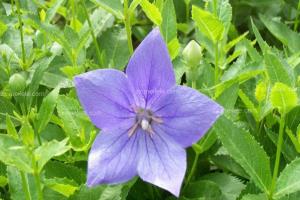The cultivation method of Lily of the valley, the appreciation of the pictures of the valley of the valley
Different plants have different breeding methods, especially in the details, many plants have different requirements for light, water and soil, and so is the lily of the valley. Next, let's take a look at the cultivation methods of Lily of the valley with the editor, and enjoy the beautiful pictures of the valley of the valley.

Key points of cultivation of Lily of the valley
Small bulbs used to divide the rhizome and the end of the rhizome can be propagated in spring and autumn, and November is the best. There are young buds of different sizes on the rhizome. After the aboveground part withered in autumn, the rhizome was dug up, and each terminal bud was cut off with a section of rhizome to plant, and a new plant could be formed.
The hypertrophic buds can blossom in the following spring, while the smaller ones need to blossom after a year. Seeds washed from red-ripe berries in autumn can be sowed directly on the seedbed in the open field and germinated the following spring.
The lily of the valley is a kind of plant which likes semi-shade, moist, cool environment, cold tolerance and hot bogey. As long as there are proper shady conditions, it will propagate rapidly by spreading roots. Shading and moist and fertile soil are important conditions for good planting. Humus and sandy soil are ideal, which are both fertile and hydrophobic.
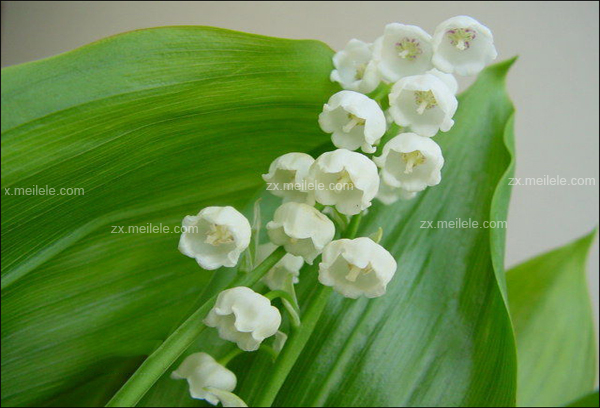
It is often cut into rhizomes or sprouts in spring and autumn, cultivated separately and propagated separately. It is better to plough fertile soil for planting. Change the land and plant again after 3 or 4 years, or rotate with other flowers.
During the growing period, lily should be kept loose and moist. Fully fermented topdressing was applied in early spring and late autumn respectively. After 10-15 days, the room temperature rose to 20 ℃, the bottom temperature was 22 ℃, and watering and topdressing were increased. After 3 weeks, it could blossom.
Plant more than 5 cm of covered soil and water thoroughly after planting. After sprouting in spring, topdressing once every 15 days, watering should be paid attention to during drought, after the flower stem is drawn, fertilizer should be stopped; after the flower withered, the pedicel should be cut off in time, and then topdressing once or twice. After the shoot withered in late autumn, it was covered with rotten leaves and cow dung to protect the rhizome and its dormant buds to survive the winter.
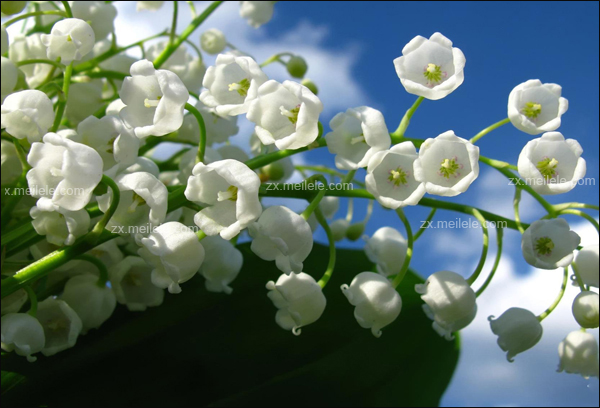
The ground should be planted every 3-4 years, and the potted plants should choose fat and large rhizome buds, with 4-5 buds per pot, and the pot should be changed once a year. Promoting cultivation: the rhizome treated with low temperature is planted, and the temperature is maintained at about 18-20 ℃ during the whole cultivation period. Pay attention to fertilizer and water management, keep the soil moist, and blossom for about a month. If there is harm to brown spot, spray with 75% chlorothalonil wettable powder 700 times.
A ramet propagation was carried out in 2 ~ 3 years. In late autumn, after the aboveground part of the plant withered, the buds at the end of the rhizome were dug up for ramet planting. After the ramet of the large bud, it blossoms in the next spring, and the small one blossoms the next year.
There are flower buds and leaf buds at the top of the underground rhizome of Lilium. The first ramet had better leave 4-6 buds, including both flower buds and leaves, with 4-6 buds in each section. The wound was smeared with some plant ash or sulfur powder, and the hole was covered with soil for about 5 meters.
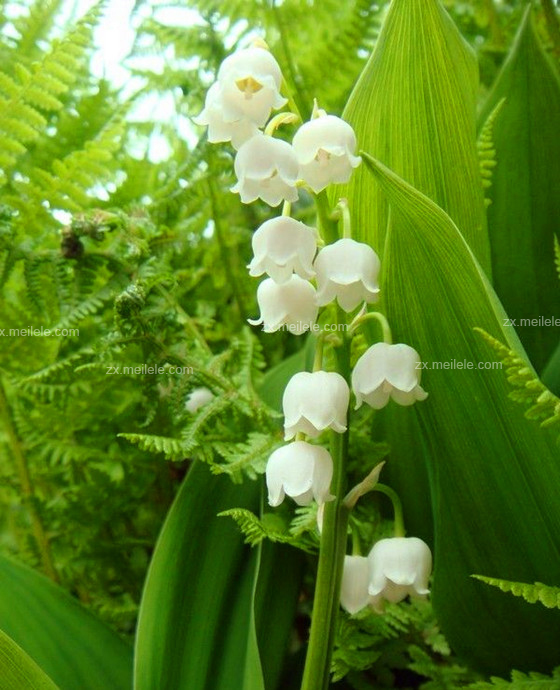
For example, when breeding or introduction from a remote place, seeds can be used to propagate, sow in autumn and germinate the following spring.
The management of lily of the valley should be fully fertilized. After sprouting in spring, diluted rotten cake fertilizer should be irrigated every 7-10 days, and liquid fertilizer should be applied once after pedicel, flower shedding and autumn. After flowering, it is appropriate to cut off the stems and branches as soon as possible, so that nutrients are concentrated to supply the rhizome. When the open field is overwintering, the ground can be covered with grass or fine soil to prevent the cold.
The pot plant can dig out the budding rhizome in November and store it in 3 ℃ ~ 5 ℃ for 14 days, then take it out and plant it in a pot without light. The temperature is kept at 12: 14 ℃, and the temperature is controlled at 20: 22 ℃ after the bud is unearthed.
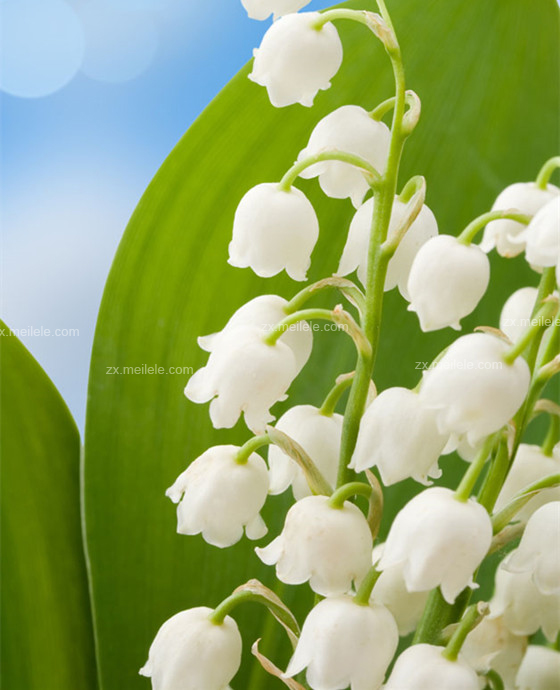
Then appropriate watering and topdressing. If it is properly cultivated, it can blossom later. If you do not give low temperature and dark treatment in advance, the growth of leaves will be uneven and flowers and plants will not germinate.
Lily of the valley is strong in nature and extensive in management. if rotten cake fertilizer is often applied after sprouting in spring, it will blossom luxuriantly, stop fertilization after scape extraction, and resume fertilization for 1 or 2 times after flower fade can promote its rhizome to sprout new tillers.
It is common to propagate by dividing the rhizome. The budded rhizome of the mother plant was planted in autumn and survived after careful maintenance. The sprouting tillers from the root base can also be cut off and planted separately, but the reproduction rate is low.
Summary: the above is the introduction of the key points of the cultivation of Lily of the valley, not only from the soil, fertilization and other aspects, but also from every detail. Different plants have different requirements for the environment, which requires everyone's attention.
More information
| | what does white rose mean | what plant protects against computer radiation | geranium | cultivation methods and precautions of rhododendron | Golden orchid |
| | flowering period of lavender | Indoor foliage plants | Parthenocissus parthenocissus | folding method of lilies | efficacy and function of mint | Culture method of mimosa |
| | how to raise succulent plants | Osmanthus fragrans | efficacy and function of gynostemma pentaphyllum | hand-made roses | efficacy and function of honeysuckle | Kumquat |
Lily of the valley is strong in nature and extensive in management. if rotten cake fertilizer is often applied after sprouting in spring, it will blossom luxuriantly, stop fertilization after scape extraction, and resume fertilization for 1 or 2 times after flower fade can promote its rhizome to sprout new tillers.
It is common to propagate by dividing the rhizome. The budded rhizome of the mother plant was planted in autumn and survived after careful maintenance. The sprouting tillers from the root base can also be cut off and planted separately, but the reproduction rate is low.
Summary: the above is the introduction of the key points of the cultivation of Lily of the valley, not only from the soil, fertilization and other aspects, but also from every detail. Different plants have different requirements for the environment, which requires everyone's attention.
More information
| | what does white rose mean | what plant protects against computer radiation | geranium | cultivation methods and precautions of rhododendron | Golden orchid |
| | flowering period of lavender | Indoor foliage plants | Parthenocissus parthenocissus | folding method of lilies | efficacy and function of mint | Culture method of mimosa |
| | how to raise succulent plants | Osmanthus fragrans | efficacy and function of gynostemma pentaphyllum | hand-made roses | efficacy and function of honeysuckle | Kumquat |
Related
- Wuhan Hospital Iron Tree Blooming Result Was Instantly Frightened by the Gardener Master
- Which variety of camellia is the most fragrant and best? Which one do you like best?
- What is the small blue coat, the breeding methods and matters needing attention of the succulent plant
- Dormancy time and maintenance management of succulent plants during dormancy
- Minas succulent how to raise, Minas succulent plant pictures
- What are the varieties of winter succulent plants
- How to raise succulent plants in twelve rolls? let's take a look at some experience of breeding twelve rolls.
- Attention should be paid to water control for succulent plants during dormant period (winter and summer)
- Watering experience of twelve rolls of succulent plants
- Techniques for fertilizing succulent plants. An article will let you know how to fertilize succulent plants.



